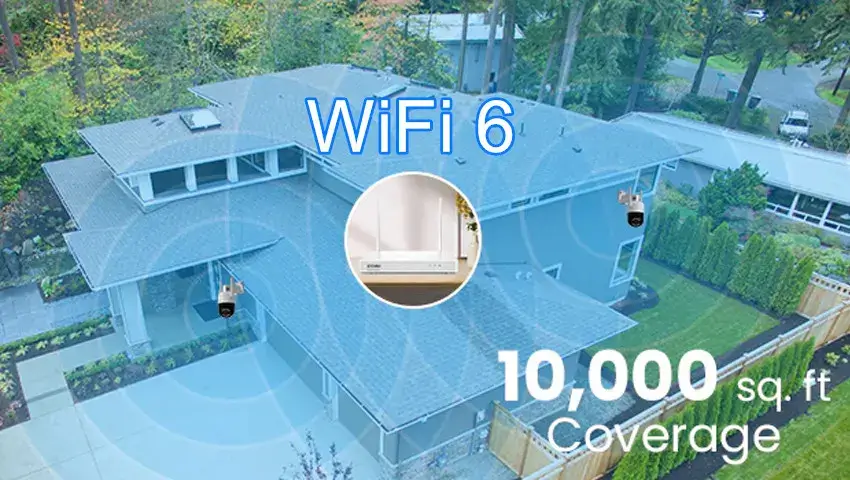In an increasingly connected world, Wi-Fi security has become essential for safeguarding personal data and ensuring privacy. WPA2 and WPA3 are two key protocols that define the security of wireless networks. While WPA2 has been the gold standard for many years, WPA3 introduces several advanced features to address modern security threats. Let’s dive into what has changed and why it matters for your network.
Contents
What is WPA2?
WPA2 (Wi-Fi Protected Access 2), introduced in 2004, became the default standard for securing wireless networks. It utilizes AES (Advanced Encryption Standard) encryption, ensuring reliable protection against unauthorized access.
One of WPA2’s greatest strengths is its compatibility. Almost every Wi-Fi-enabled device supports WPA2, making it widely used across homes and businesses. However, despite its reliability, WPA2 is not without flaws. Vulnerabilities such as the KRACK (Key Reinstallation Attack) exploit and susceptibility to brute-force password attacks have shown its limitations in an era of evolving cyber threats.
What is WPA3?
Launched in 2018, WPA3 was designed to enhance security and usability in response to the weaknesses of WPA2. Key features of WPA3 include:
- Stronger Password Protection: The Simultaneous Authentication of Equals (SAE) replaces WPA2’s Pre-Shared Key (PSK) method, reducing the risk of brute-force attacks and offering greater resilience even with weak passwords.
- Enhanced Encryption: WPA3 increases encryption strength, offering 192-bit encryption for enterprise networks, compared to WPA2’s 128-bit standard.
- Simplified Connectivity: WPA3 makes connecting devices like IoT and smart home gadgets more secure and user-friendly, even if they lack traditional input methods.
WPA3 is also backward compatible with WPA2, ensuring that older devices can still connect to networks running WPA3 without significant issues.
Key Differences Between WPA2 and WPA3
1. Encryption
WPA3 offers a higher level of encryption, with enterprise networks benefitting from 192-bit security. This added strength protects against increasingly sophisticated hacking attempts. WPA2 relies on 128-bit encryption, which remains secure but is less resilient to modern attacks.
2. Ease of Use
WPA3 simplifies the process of connecting devices to Wi-Fi, particularly for those without screens or input interfaces, such as smart doorbells or thermostats. This improvement makes WPA3 ideal for smart homes and IoT-heavy environments.
3. Security Enhancements
One of the standout features of WPA3 is forward secrecy. Even if a hacker intercepts encrypted data, they cannot decrypt it later, even if they gain access to the network key. This is a significant improvement over WPA2, which lacks this protection.
Why Upgrade to WPA3?
1. Enhanced Security
With WPA3, you’re better equipped to defend against modern cyber threats, such as offline dictionary attacks, where hackers attempt to guess your password repeatedly without being connected to the network.
2. Future-Proofing Your Network
As technology advances, so do cyber threats. WPA3 is designed to stay relevant in the face of evolving security challenges. Upgrading ensures that your network remains robust for years to come.
3. Ideal for IoT Devices
If your home or office relies on IoT devices, WPA3 is a clear choice. Its simplified connectivity and advanced protection mechanisms make it a perfect fit for networks with multiple smart gadgets.
FAQs
1. Can older devices connect to WPA3 networks?
Yes, WPA3 is backward compatible with WPA2. However, older devices will connect using WPA2 encryption rather than WPA3, limiting some of the new protocol’s benefits.
2. Is WPA3 worth upgrading to?
Absolutely. If security is a priority, upgrading to WPA3 is a smart investment. It provides better protection against modern threats and is more suited for future technologies.
3. How significant are the security improvements in WPA3?
The improvements are substantial. Features like forward secrecy, SAE, and enhanced encryption make WPA3 far more secure than WPA2, especially against advanced hacking techniques.
Conclusion
WPA3 is a significant evolution in Wi-Fi security, addressing the vulnerabilities of WPA2 while introducing features that improve both usability and protection. While WPA2 remains a solid option for many, upgrading to WPA3 is recommended for those looking to future-proof their network and safeguard against modern threats.
By understanding the differences between these protocols, you can make an informed decision about which one best suits your needs. For a safer, smarter, and more secure network, WPA3 is the way forward.




